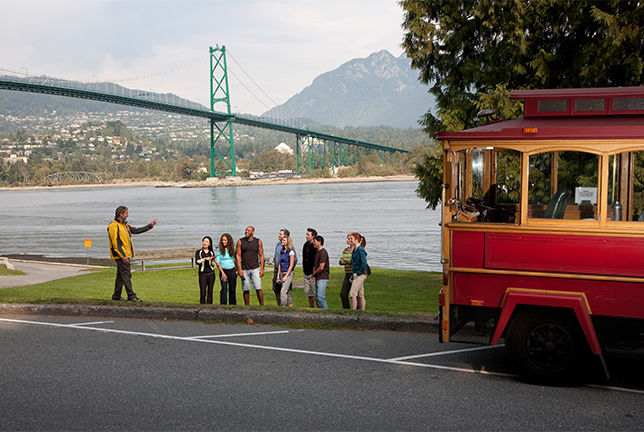
Vancouver is an active city – jogging, biking and hiking are all part of the city’s identity and Stanley Park is an integral part of the outdoors culture. This 988-acre natural rainforest is home to a 14-mile seawall, authentic totem poles, a rose garden, restaurants, endless picnic space, beaches and pools, and the Vancouver Aquarium. With all there is to see and do, here are five ways to get the most out of a walk in the park.
1. Take the trail less traveled. Yes, the seawall is gorgeous, but on a sunny day, it is also packed with pedestrians, rollerbladers, cyclists, dogs and strollers. But in the shaded old-growth forest of the park is a vast network of trails – 16.7 miles to be exact – that are calm, shaded and very peaceful. They are well-marked, but do take a downloadable map.
2. Running on a trail created by typhoon-felled trees in the 1960s, the Stanley Park Miniature Train (a replica of the kind used by the Canadian Pacific Railway) winds its way through 1.2 miles of family-friendly landscape. Holidays are marked with special events, like Ghost Train (Halloween), Bright Nights (winter holidays) and Easter Train (complete with an egg hunt).
3. While Stanley Park is full of history, perhaps no spot has more sentimental value than the Hollow Tree, estimated to be up to 800 years old. Like a cat with nine lives, the massive Western Red Cedar stump has survived storms and demolition plans to remain one of the most photographed landmarks in the city.
4. Stop and smell the flowers (with a side of classic literature). The Rose Garden and Shakespeare Garden, situated side-by-side, are awash in color and beautiful perennials. The Rose Garden is a popular wedding spot that proudly displays more than 3,500 rose bushes. The Shakespeare Garden features plants and trees mentioned in famous works like Othello (Black Locust), Measure for Measure (Red Oak) and Henry VIII (Atlas Cedar) (thankfully, the accompanying quotes are placed on plaques around the garden, so no need to pull out the Kindle).
5. The park is also home to some of the most notable First Nations public art in Canada. The nine totem poles at Brockton Point (near the seawall and gardens) comprise the most visited spot in British Columbia for good reason. They have a rich history, photograph beautiful and are so valuable to the cultural identity of the land that the original poles (some dating back to the 1880s) have been sent to various museums for preservation, while the current ones are exact replicas commissioned by the park’s board.
Photo Courtesy of Coast Mountain Photography

